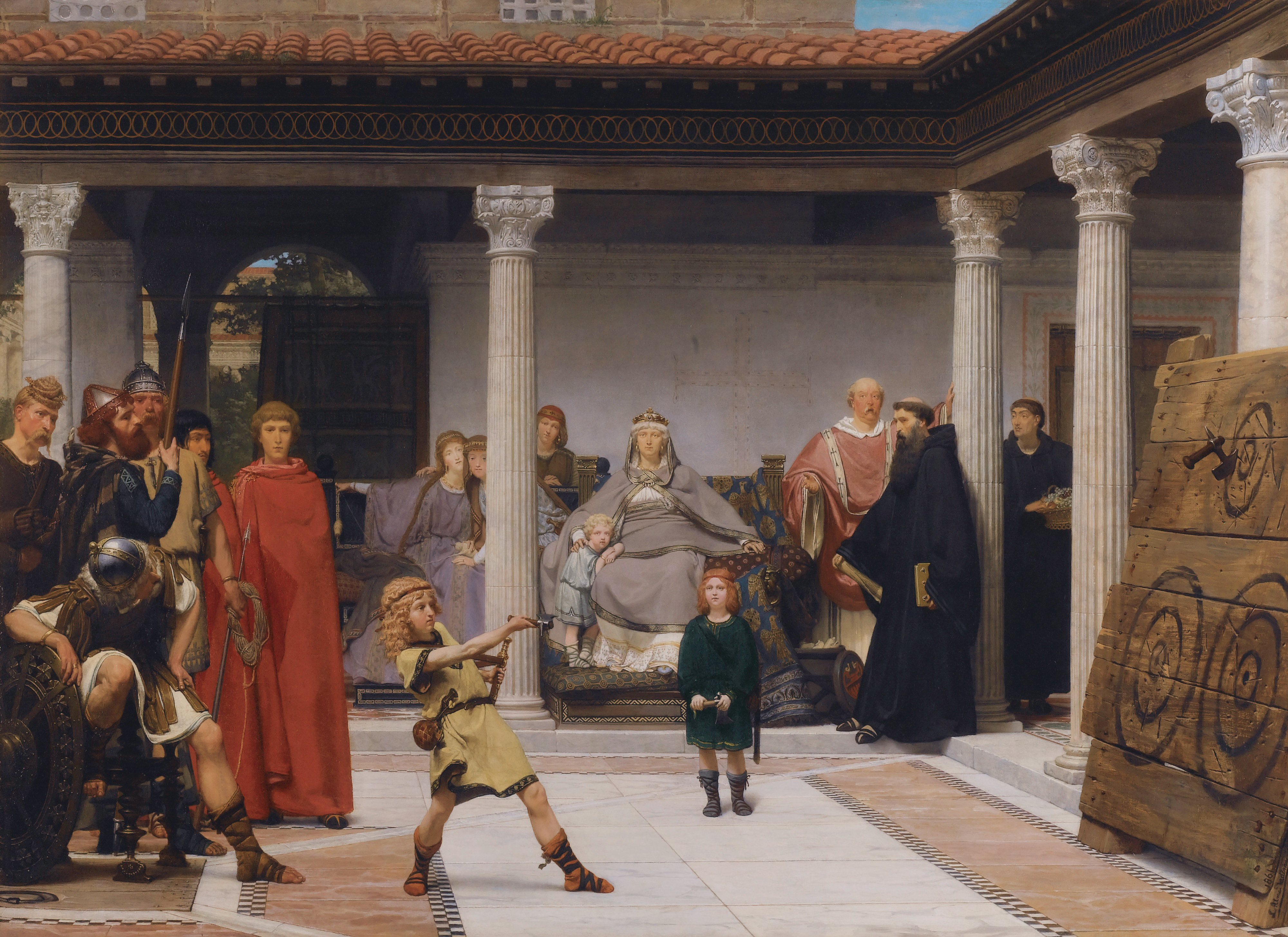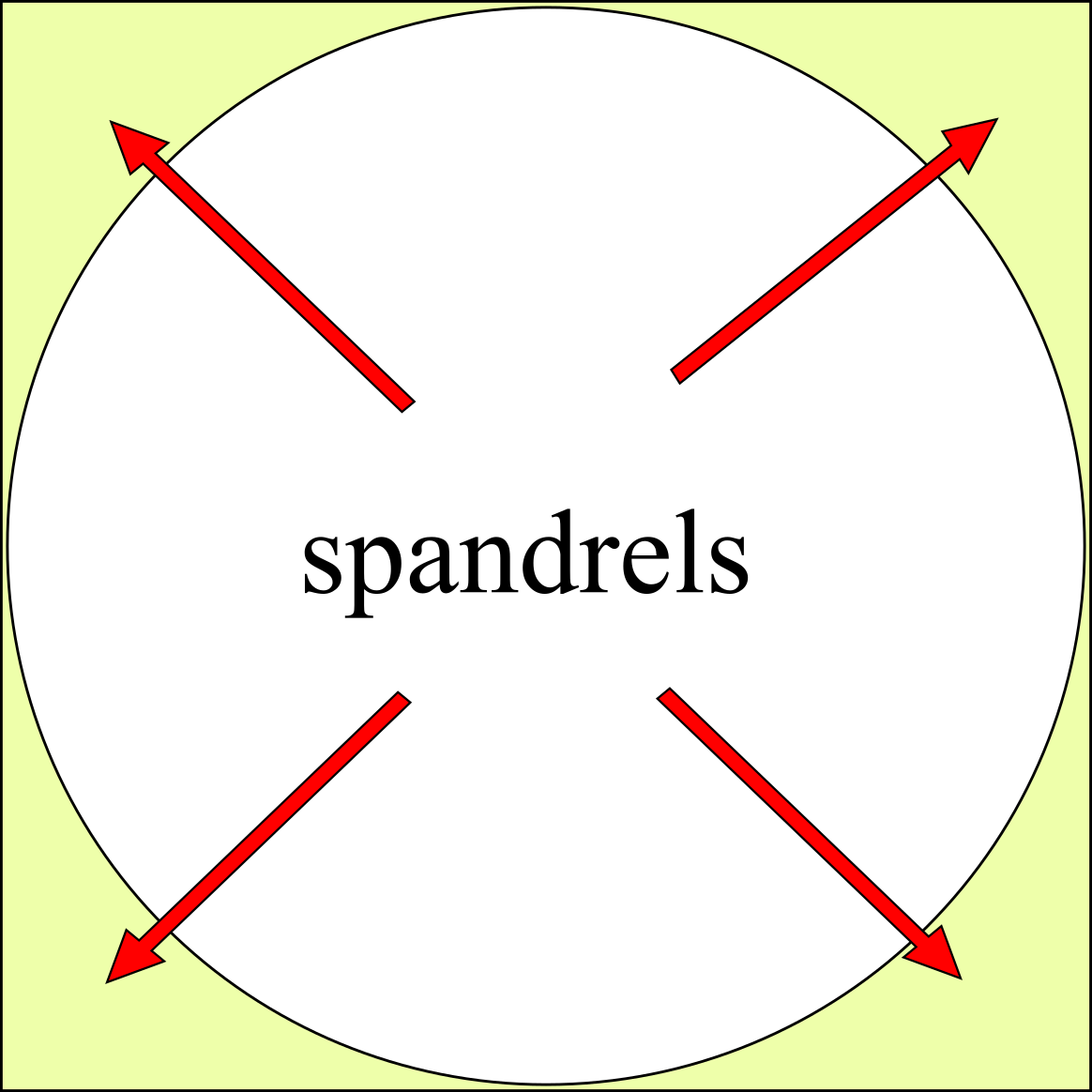|
Spring (Alma-Tadema Painting)
''Spring'' is an 1894 oil-on-canvas painting by the Anglo-Dutch artist Lawrence Alma-Tadema, which has been in the collection of the J. Paul Getty Museum in Los Angeles, California, since 1972. The painting relates the Victorian custom of children collecting flowers on May Day back to an Ancient Roman spring festival, perhaps Cerealia or Floralia or Ambarvalia, although the details depicted in the painting do not correspond to any single Roman festival. It was the inspiration for the scene of Julius Caesar's triumphal entry into Rome in the 1934 film ''Cleopatra (1934 film), Cleopatra''. Description The tall, narrow painting depicts a procession of women and children along a Roman street and down some marble steps. Spectators cheer from the classical buildings of polychrome marble to either side, some throwing down flowers. The participants in the procession are garlanded with bright flowers, with some also bearing baskets of flowers or branches of blossom, and other playi ... [...More Info...] [...Related Items...] OR: [Wikipedia] [Google] [Baidu] |
Lawrence Alma-Tadema
Sir Lawrence Alma-Tadema ( ; born Lourens Alma Tadema, ; 8 January 1836 – 25 June 1912) was a Dutch people, Dutch painter who later settled in the United Kingdom, becoming the last officially recognised Denization, denizen in 1873. Born in Dronryp, the Netherlands, and trained at the Royal Academy of Fine Arts (Antwerp), Royal Academy of Antwerp, Belgium, he settled in London, England in 1870 and spent the rest of his life there. A painter of mostly classical subjects, he became famous for his depictions of the luxury and decadence of the Roman Empire, with languorous figures set in fabulous marbled interiors or against a backdrop of dazzling blue Mediterranean Sea, Mediterranean sea and sky. One of the most popular Victorian painters, Alma-Tadema was admired during his lifetime for his draftsmanship and accurate depictions of Classical antiquity, but his work fell out of fashion after his death, and only since the 1960s has it been appreciated for its importance within Vic ... [...More Info...] [...Related Items...] OR: [Wikipedia] [Google] [Baidu] |
Capriccio (art)
In painting, a capriccio (, plural: ''capricci'' ; in older English works often anglicized as "caprice") is an Architecture, architectural fantasy, placing together buildings, Archaeology, archaeological ruins and other architectural elements in fictional and often fantastical combinations. These paintings may also include staffage (figures). Capriccio falls under the more general term of landscape painting. This style of painting was introduced in the Renaissance art, Renaissance and continued into the Baroque art, Baroque. By the late 18th century the term had expanded to mean any image with an equivalent degree of fantasy, for example as used in the titles of print series by Giovanni Battista Tiepolo and Francisco Goya, Goya, both of whom focus on figures rather than architecture. The term is also used for other types of art with an element of fantasy (as Capriccio (music), capriccio in music). Capriccio style There are several etymologies that have been put forward for ' ... [...More Info...] [...Related Items...] OR: [Wikipedia] [Google] [Baidu] |
Algernon Charles Swinburne
Algernon Charles Swinburne (5 April 1837 – 10 April 1909) was an English poet, playwright, novelist and critic. He wrote many plays – all tragedies – and collections of poetry such as '' Poems and Ballads'', and contributed to the Eleventh Edition of the ''Encyclopædia Britannica''. Swinburne wrote about many taboo topics, such as lesbianism, sadomasochism, and antitheism. His poems have many common motifs, such as the ocean, time, and death. Several historical people are featured in his poems, such as Sappho ("Sapphics"), Anactoria ("Anactoria"), and Catullus ("To Catullus"). Biography Swinburne was born at 7 Chester Street, Grosvenor Place, London, on 5 April 1837. He was the eldest of six children born to Captain (later Admiral) Charles Henry Swinburne (1797–1877) and Lady Jane Henrietta, daughter of the 3rd Earl of Ashburnham, a wealthy Northumbrian family. He grew up at East Dene in Bonchurch on the Isle of Wight. The Swinburnes also had a London home at ... [...More Info...] [...Related Items...] OR: [Wikipedia] [Google] [Baidu] |
Pompeii
Pompeii ( ; ) was a city in what is now the municipality of Pompei, near Naples, in the Campania region of Italy. Along with Herculaneum, Stabiae, and Villa Boscoreale, many surrounding villas, the city was buried under of volcanic ash and pumice in the eruption of Mount Vesuvius in 79 AD. Largely preserved under the ash, Pompeii offers a unique snapshot of Culture of ancient Rome, Roman life, frozen at the moment it was buried, as well as insight into ancient urban planning. It was a wealthy town of 10,000 to 20,000 residents at the time it was destroyed. It hosted many fine public buildings and luxurious private houses with lavish decorations, furnishings and artworks, which were the main attractions for early excavators; subsequent excavations have found hundreds of private homes and businesses reflecting various architectural styles and social classes, as well as numerous public buildings. Organic remains, including wooden objects and human bodies, were interred in the as ... [...More Info...] [...Related Items...] OR: [Wikipedia] [Google] [Baidu] |
Equestrian Statue
An equestrian statue is a statue of a rider mounted on a horse, from the Latin ''eques'', meaning 'knight', deriving from ''equus'', meaning 'horse'. A statue of a riderless horse is strictly an equine statue. A full-sized equestrian statue is a difficult and expensive object for any culture to produce, and figures have typically been portraits of rulers or, in the Renaissance and more recently, military commanders. Although there are outliers, the form is essentially a tradition in Western art, used for imperial propaganda by the Roman emperors, with a significant revival in Italian Renaissance sculpture, which continued across Europe in the Baroque, as mastering the large-scale casting of bronze became more widespread, and later periods. Statues at well under life-size have been popular in various materials, including porcelain, since the Renaissance. The riders in these may not be portraits, but figures from classical mythology or generic figures such as Native Americans in t ... [...More Info...] [...Related Items...] OR: [Wikipedia] [Google] [Baidu] |
Centaurs
A centaur ( ; ; ), occasionally hippocentaur, also called Ixionidae (), is a creature from Greek mythology with the upper body of a human and the lower body and legs of a horse that was said to live in the mountains of Thessaly. In one version of the myth, the centaurs were named after Centaurus, and, through his brother Lapithes, were kin to the legendary tribe of the Lapiths. Centaurs are thought of in many Greek myths as being as wild as untamed horses, and were said to have inhabited the region of Magnesia and Mount Pelion in Thessaly, the Foloi oak forest in Elis, and the Malean peninsula in southern Laconia. Centaurs are subsequently featured in Roman mythology, and were familiar figures in the medieval bestiary. They remain a staple of modern fantastic literature. Etymology The Greek word ''kentauros'' is generally regarded as being of obscure origin. The etymology from ''ken'' + ''tauros'', 'piercing bull', was a euhemerist suggestion in Palaephatus' rationaliz ... [...More Info...] [...Related Items...] OR: [Wikipedia] [Google] [Baidu] |
Lapiths
The Lapiths (; , ''Lapithai'', Grammatical number, sing. Λαπίθης) were a group of legendary people in Greek mythology, who lived in Thessaly in the valley of the Pineios (Thessaly), Pineios and on the mountain Pelion. They were believed to have descended from the mythical Lapithes (hero), Lapithes, brother of Centaurus (Greek mythology), Centaurus, with the two heroes giving their names to the races of the Lapiths and the Centaur, Centaurs respectively. The Lapiths are best known for their involvement in the ''Centauromachy'' (), a mythical fight that broke out between them and the Centaurs during Pirithous and Hippodamia (wife of Pirithous), Hippodamia's wedding. Mythology Origin The Lapiths were an Aeolians, Aeolian tribe who, like the Myrmidons, were natives of Thessaly. The genealogies make them a kindred people with the centaurs: In one version, Lapithes (hero), Lapithes (Λαπίθης) and Centaurus (Greek mythology), Centaurus (Κένταυρος) were said to be ... [...More Info...] [...Related Items...] OR: [Wikipedia] [Google] [Baidu] |
Taurus (astrology)
Taurus (; , Latin for "bull") is the second astrological sign in the modern zodiac. It spans from 30° to 60° of the zodiac. This sign belongs to the Earth element or triplicity, as well as a fixed modality, quality, or quadruplicity. It is a Venus-ruled sign, the Moon is in its exaltation here at exactly 3°. The Sun transits this sign from approximately April 20 until May 20 in western astrology. Taurus is one of the three earth signs, alongside Capricorn and Virgo. Taurus's opposite sign is Scorpio. History The bestial sign of Taurus is associated with several myths and bull worship from several ancient cultures. It was the first sign of the zodiac established among the Mesopotamians, who called it "The Great Bull of Heaven", as it was the constellation through which the Sun rose on the vernal equinox at that time, that is the Early Bronze Age, from about 4000 BC to 1700 BC. The zodiac sign of Taurus does not entirely align with the constellation of Taurus. Taur ... [...More Info...] [...Related Items...] OR: [Wikipedia] [Google] [Baidu] |
Aries (astrology)
Aries (; , ) is the first astrological sign in the zodiac, spanning the first 30 degrees of celestial longitude (0°≤ <30°), and originates from the Aries constellation. Under the tropical zodiac, the Sun transits this sign from approximately March 21 to April 19 each year. This time-duration is exactly the first month of the (Arabic Hamal/Persian Farvardin/Pashto Wray). According to the tropical system of astrology< ... [...More Info...] [...Related Items...] OR: [Wikipedia] [Google] [Baidu] |
Arch Of Constantine
The Arch of Constantine () is a triumphal arch in Rome dedicated to the emperor Constantine the Great. The arch was commissioned by the Roman Senate to commemorate Constantine's victory over Maxentius at the Battle of the Milvian Bridge in AD 312. Situated between the Colosseum and the Palatine Hill, the arch spans the '' Via Triumphalis'', the route taken by victorious military leaders when they entered the city in a triumphal procession. Dedicated in 315, it is the largest Roman triumphal arch, with overall dimensions of high, wide and deep. It has three bays, the central one being high and wide and the laterals by each. The arch is constructed of brick-faced concrete covered in marble. The three-bay design with detached columns was first used for the Arch of Septimius Severus in the Roman Forum (which stands at the end of the triumph route) and repeated in several other arches now lost. Though dedicated to Constantine, much of the sculptural decoration consists of rel ... [...More Info...] [...Related Items...] OR: [Wikipedia] [Google] [Baidu] |
Spandrel
A spandrel is a roughly triangular space, usually found in pairs, between the top of an arch and a rectangular frame, between the tops of two adjacent arches, or one of the four spaces between a circle within a square. They are frequently filled with decorative elements. Meaning There are four or five accepted and cognate meanings of the term ''spandrel'' in architecture, architectural and art history, mostly relating to the space between a curved figure and a rectangular boundary – such as the space between the curve of an arch and a rectilinear bounding moulding, or the wallspace bounded by adjacent arches in an arcade and the stringcourse or moulding above them, or the space between the central medallion of a carpet and its rectangular corners, or the space between the circular face of a clock and the corners of the square revealed by its hood. Also included is the space under a flight of stairs, if it is not occupied by another flight of stairs. In a building with more ... [...More Info...] [...Related Items...] OR: [Wikipedia] [Google] [Baidu] |






